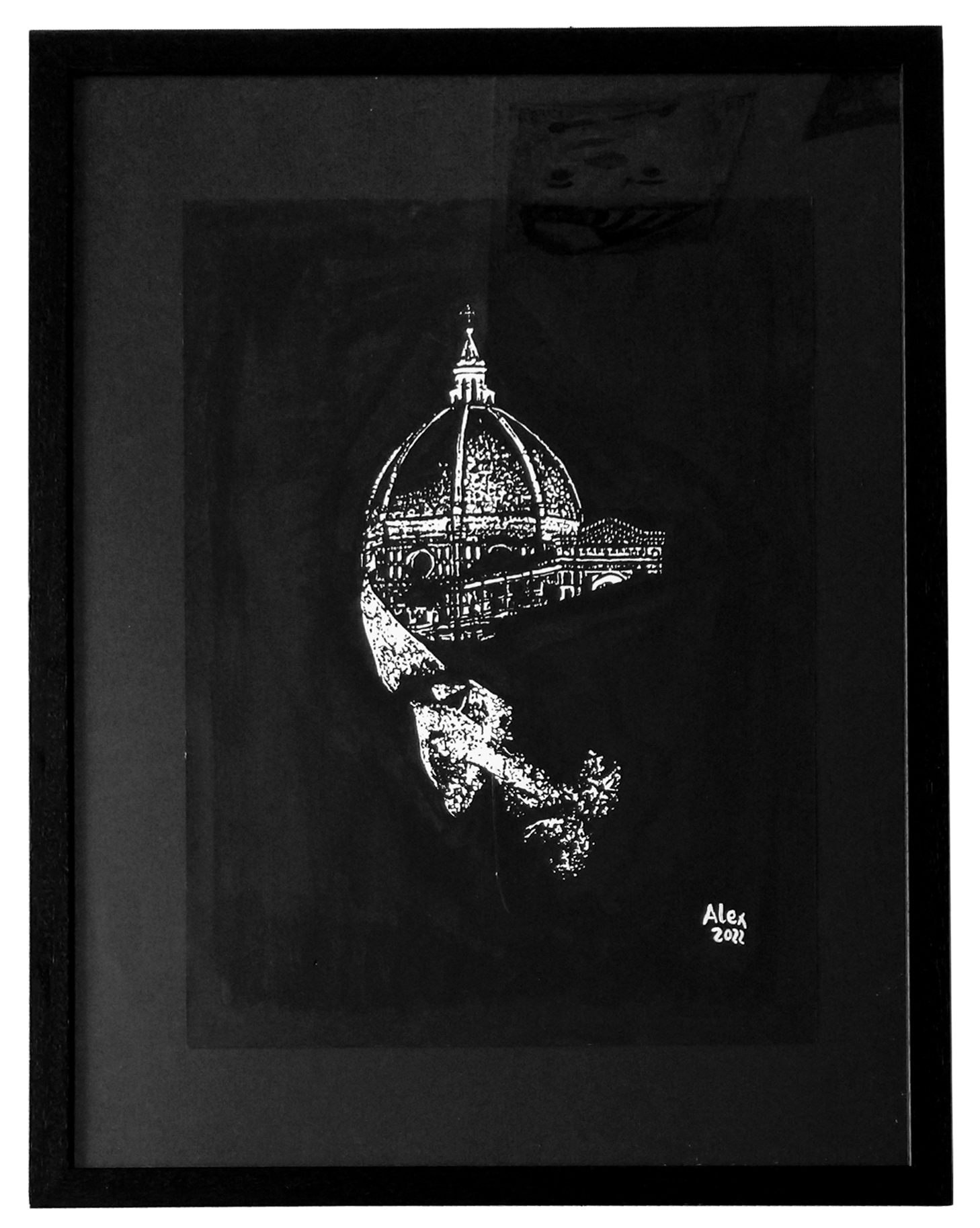“Dante sotto la città”, Alexandre Mitchell, 2022
(Canson 180g, 29,7x42cm, Indian ink)
The portrait of Dante Alighieri that inspired this drawing is a death mask kept in the Palazzo Vecchio in Florence. It is not his original mask, made from wax or carved directly in the presence of the dead poet. It is more likely to be a copy of a lost portrait. But the mask remains surprisingly evocative.
Visitors from Italy and abroad pay tribute to him every day as the father of the Italian language.
His role cannot be underestimated. He chose the Tuscan vernacular rather than Latin to write his magnum opus, The Divine Comedy, and very soon Florentine Tuscan became the dominant Italian language, making Florence one of the most prolific centres of the Renaissance.
In the drawing, it is the Duomo, the City’s most precious and significant architectural jewel, that crowns this prince of poets.
Further reading
- Barański, Z. G., Gilson, S. (eds), The Cambridge Companion to Dante’s ‘Commedia’, Cambridge University Press, 2018.
- Raffa, G. P., The Complete Danteworlds: A Reader’s Guide to the Divine Comedy, Chicago: University of Chicago Press, 2009.
- Scartazzini, G. A., Enciclopedia dantesca: dizionario critico e ragionato di quanto concerne la vita e le opere di Dante Alighieri (2 volumes), 1896–1898.
Resources
- Statues of Dante | Santa Croce | Uffizi Gallery Loggia
- ‘Death’ mask of Dante | pic | history
- Gustave Doré’s illustrations for the Divine Comedy | low-resolution gallery | very high resolution PDF (careful! 1.4 GB)
- Dante biography| Enciclopedia Italiana (1931) | Wikipedia
- Il Duomo | official website



